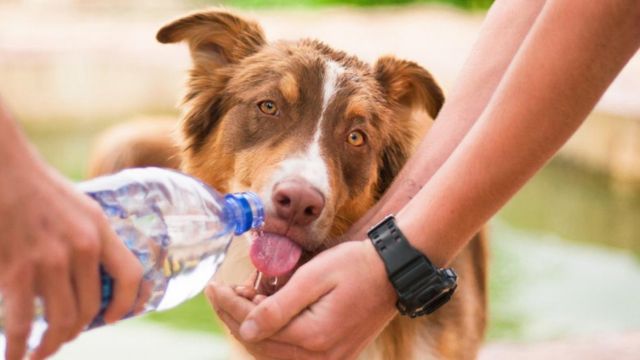WFCN –
While training, there is less glucose available because dogs expend more energy cooling down. Glucose is essential for learning and cooling down. Weather conditions that are hotter than 90 degrees and more humid than 15% should not be worked outdoors with dogs. Because they are unable to relax properly, they are under more stress and unable to learn.
Sam Freeman-KSA owns and operates Pet Behavior Solutions and Edu-Care for Dogs of the Valley. He is also the president of the two businesses. Animal shelters and animal control organizations in Arizona utilize the Core Behavior Assessment, a behavior evaluation method that she created.
Owner and president of Pet Behavior Solutions and Edu-Care for Dogs of the Valley, Sam Freeman is a CPDT-KSA. Animal shelters and animal control organizations in Arizona utilize the Core Behavior Assessment, a behavior evaluation method that she created.

The warning that hot pavement can burn a dog’s paws is a common one in hotter climates, such as Arizona. Someone once stated that a dog can’t take the heat any more than you can. Curiously, it has been found that dogs might experience an increase in the stress hormone cortisol and a triggering of anxiety when exposed to hot temperatures during behavior modification and training.
SEE MORE –
Weather Alert: Intense Heat and Limited Rainfall Expected in Big Country
While training, there is less glucose available because dogs expend more energy cooling down. Glucose is essential for learning and cooling down. A hot weather training session, which uses stresses to induce a behavior change, is very different from a dog’s playtime in hot weather. Dogs are thought to experience less anxiety when playing since they may dictate their own schedules for how long they play and when they rest.
What following is a typical adaption process for dogs when they encounter psychological stressors:
One, the “fight or flight” response, which occurs during the first alarm phase.
The third phase is recovery, during which you should relax, lower your heart rate, breathe normally, and cool down.
When dogs are exposed to high temperatures, their bodies go through a number of changes, including:
• Rapid heartbeat.
• Trying to cool down by panting more frequently and breathing more heavily.
• Enhanced contractility of the muscles.
A rise in blood pressure.
• Elevated blood glucose levels.
• Suppression of hunger (the transfer of blood away from the digestive tract and toward the muscles, which makes it harder, if not impossible, to take food rewards as a reward).
• Decreased threshold (which makes the dog more prone to bite or fight), inability to focus on complicated activities (all attention goes to instinctive fleeing or fighting back), and an overall lack of impulse control.
Adding the potential stresses that can arise during training to the physiological stress that dogs already experience from the heat is a recipe for disaster. You might want to teach your dog heeling or leash work, both of which require impulse control and go against the grain of how your dog usually walks.
On top of that, there’s the added psychological stress of dealing with other dogs, automobiles, bikes, joggers, humans, etc., any one of which can trigger unpleasant emotions in dogs, such as aggression, fear, arousal, or frustration.
If you want to know why your dog acts a certain way when you’re working on his leash reactivity, you have to trigger him. The intended alternative habits may need to be established by repetitive triggering. Overheating poses health risks to dogs and reduces their efficacy in training. Training when it’s hot could be counterproductive and even harmful to our progress.
As a result, it’s not a good idea to try to teach your dog new behaviors to calm down or stop being aggressive when it’s hot, as those alternatives might not be possible. Another challenge with hot leash training is that we tend to irritate the dog more easily. Conflict arises even when positive reinforcement is used to educate the dog to walk on a loose leash and focus on the handler. Dogs often attempt to go into the recovery phase before they have fully learnt the behavior, just because they are tired.
In terms of both skill set and environmental acclimatization, the training that working dogs receive goes above and beyond that of a “pet” dog. This is true for arson dogs, police dogs, and support animals. Animals really can’t manage the heat well enough to get the benefits of heat-adapted training.
Weather conditions that are hotter than 90 degrees and more humid than 15% should not be worked outdoors with dogs. Because they are unable to relax properly, they are under more stress and unable to learn. Early morning is the best time to train your dog because the pavement is cooler and the temperature is lower.
